Capsule-in-Capsule Technology
The author outlines how to choose carriers and capsule shells according to dosage requirements and intended use. This article is part of a special Drug Delivery issue.
This article is part of a special issue on Drug Delivery.
Liquid-filled hard-capsule technology is well-established for formulation and manufacture (1). In addition to being a convenient product format, it is well recognized as offering a wide range of applications, including for use in compounds with low bioavailability or with low-dose uniformity issues. Liquid-filled hard capsules can provide products with various release profiles and may be used to overcome stability concerns such as moisture uptake. Capsule-in-capsule formats represent a significant further development in the product type. In this format, a formulated capsule (i.e., liquid-filled or dry-filled) is nested in an outer liquid-filled capsule. Each capsule achieves a particular formulation aim (e.g., prompt or controlled release). This article will describe formulation approaches and provide examples of in vitro investigations of a capsule-in-capsule system that enables the presentation of multiphase or multidrug formulations in a single dosage unit.
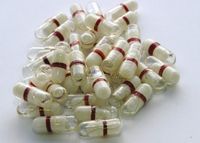
(W.J. BOWTLE)
Formulation aims and carrier selection
Figure 1 suggests a range of possible formulation aims that capsule-in-capsule technology may achieve. This drug-delivery system has beneficial flexibility. The formulation aims for each component capsule may be achieved by selecting the carrier suited to the particular delivery goal (e.g., a prompt or slow-release profile). Available carriers include the following options:
- Nonaqueous fluid, possibly thickened with a thixotropic agent (e.g., colloidal silicone dioxide)
- Thermosoftening excipients with various solution characteristics that can be matched to in vivo release requirements
- Self-emulsifying carriers.
The resulting formulations may be nonaqueous solutions, suspensions, semisolid matrices, or microemulsions, all of which are suited to liquid-filled hard capsule formats.
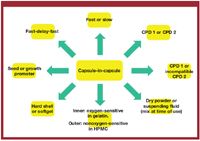
Figure 1: Target areas for the capsule-in-capsule platform. CPD is compound. (FIGURE IS COURTESY OF THE AUTHOR)
Common suitable nonaqueous fluids include pharmaceutical or nutraceutical oils (e.g., medium-chain triglycerides or soya oil), which are selected according to technical or market needs. Individual materials may require the inclusion of antioxidants or filling under nitrogen to minimize oxidation. Thermosoftening carriers are commonly fully synthetic [e.g., the high-molecular-weight polyethylene glycols (PEGs) or poloxamers], selected according to melting point and viscosity. Thermosoftening carriers also may be semisynthetics such as the macrogolglycerides (e.g., lauroyl, linoleoyl, and caprylocaproyl), selected according to melting point and hydrophilic–lipophilic balance (HLB). Varying carrier HLB values (i.e., 2–14) enable the solubility profile of the active ingredient to be matched to the required release profile. For example, a soluble compound may be formulated with a low-HLB carrier to give a slow-release profile, and a high-HLB material may improve the dissolution rate of a poorly soluble active.
Self-emulsifying drug-delivery systems also may be used. These systems generally contain an oil and a surfactant and also may contain a cosurfactant. The systems are suitable for compounds whose log P value is 2–4. For compounds with higher log P values, oils should be used. The related microemulsion products are homogeneous, clear fluid systems with small droplet size (i.e., 100–600 nm) that comprise an aqueous phase, an oily phase, a surfactant, and a cosurfactant. They form spontaneously on gentle mixing, are thermodynamically stable, and have low viscosity. The microemulsions include nonionics as surfactants, derivatives of propylene glycol or polyglycerols as cosurfactants, and vegetable oils or fatty acid esters as oily components. The proportions required for the various components may be established using pseudoternary phase diagrams to map out the microemulsion domain where the fluid remains clear. Typical applications are in increasing bioavailability, varying the release profile, improving stability, and handling potent or toxic compounds.
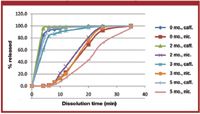
Figure 2: Dissolution profiles for series 1 doses. The outer Labrafil (Gattefossé, St-Priest, France) capsule contains caffeine (caff.), and the inner polyethylene glycol 6000 contained nicotinamide (nic.). Results after 0, 2, 3, and 5 months' storage are shown. (FIGURE IS COURTESY OF THE AUTHOR)
The semisynthetic and synthetic carriers referred to here are widely considered chemically inert, and their potential for interaction with the active is thought to be low. However, the chemical compatibility of materials is not to be taken for granted and should be the subject of standard initial compatibility testing. Even materials considered inert may be incompatible with certain actives. PEG, for example, is incompatible with drugs such as penicillin and aspirin.
Standard restrictions apply to carrier selection. Typically, water, aqueous solutions, and glycerol quickly soften hard-capsule shells and should be avoided. Alcohol and low-molecular weight PEGs (e.g., PEG 400) dehydrate gelatine shells quickly, leading to gross embrittlement within short periods (i.e., 24 h to a few days, according to the formulation). Formulators may, however, consider the possibility of using a finely balanced content of, say, PEG 400 and water. Such formulations would require careful evaluation
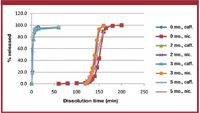
Figure 3: Dissolution profiles for series 2 doses. The outer Labrafil (Gattefossé, St-Priest, France) capsule contains caffeine (caff.), and the inner polyethylene glycol 6000 coated capsule contained nicotinamide (nic.). Results after 0, 2, 3, and 5 months' storage are shown. (FIGURE IS COURTESY OF THE AUTHOR)
The nature of formulations using complex thermosoftening excipients raises issues of possible changes in dissolution on storage because of short- or long-term polymorphic changes in the carrier These polymorphic changes could result in a decrease or increase in dissolution on storage, with possible associated clinical significance. Here, changes may arise with respect to both the active ingredient and the excipient and represent an important area of stability-test review for the dissolution of such products.
Materials
The author prepared a capsule-in-capsule system for investigation. Model compounds caffeine (Sigma Aldrich, St. Louis, MO) and nicotinamide (Sigma Aldrich) were chosen. PEG 6000 Ph. Eur. (BASF, Ludwigshafen, Germany), Gelucire 50/13 (Gattefossé, St-Priest France), and Labrafil (Gattefossé) were used as thermosoftening carriers.
Methods
Trial formulations of model compounds caffeine and nicotinamide were prepared at bench-scale in the selected thermosoftening carriers, which are suited to liquid-filled hard capsules. Inner clear/clear size 2 gelatin capsules (Capsugel, Peapack, NJ) were filled manually at 300 mg to provide 5 mg of nicotinamide in PEG 6000 or in Gelucire 50/13. Filled capsules were banded with gelatine. A proportion of nicotinamide–PEG 6000 capsules was enteric-coated with Eudragit L100-55 (Röhm, Darmstadt, Germany) at 10 mg/cm2 using a Strea-1 coater (GEA Pharma Systems, Wommelgem, Belgium). These inner size 2 capsules, with or without enteric coat, were placed into size 0 capsules.
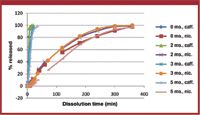
Figure 4: Dissolution profiles for series 3 doses. The outer Labrafil (Gattefossé, St-Priest, France) capsule contained caffeine (caff.), and the inner Gelucire 50/13 (Gattefossé) capsule contained nicotinamide (nic.). Results after 0, 2, 3, and 5 months' storage are shown. (FIGURE IS COURTESY OF THE AUTHOR)
The second formulation was also filled into the size 0 capsules at the required fill weight to provide 5 mg of caffeine in, Labrafil and the capsules were sealed. Samples comprising nicotinamide–PEG 6000 and caffeine–Labrafil, nicotinamide–PEG 6000 enteric coated and caffeine–Labrafil, and nicotinamide–Gelucire 50/13 and caffeine–Labrafil were designated as series 1, 2, and 3, respectively.
Dissolution testing was carried out in European Pharmacopoeia Apparatus 2 (i.e., paddles), using 900 mL of dissolution medium, stirring at 100 rpm. Dissolution testing of series 1 and 3 samples used water as the dissolution medium. Testing of series 2 samples used 0.1N HCl for 2 h, followed by adjustment to pH 7.0 using NaOH. Release of each component was determined by high-performance liquid chromatography at 262 nm. Capsule integrity and dissolution profiles were monitored at time zero and after two, three, and five months' storage at 25 °C in glass bottles.
Figures 2, 3, and 4 show in vitro dissolution profiles for all series at 0, two, three, and five months. Series 1 represented a nominal fast–fast release profile. Series 2 represented a fast–enteric-coated–fast release profile. Series 3 represented a fast–slow release profile. The formulations were designed to represent differing formats using widely-accepted thermosoftening carriers. Here, PEG 6000 and Labrafil provided matrices considered suitable for fast release of each model compound. Gelucire 50/13 provided a matrix considered suitable for the slow release of nicotinamide. The three sample series demonstrated that differing in vitro release profiles could be achieved readily using the approach described here
It is important that the system show the potential for product stability, particularly in terms of consistent integrity of the double-capsule format and the required release profiles. Each sample series demonstrated continuing capsule integrity and dissolution stability over the five-month time period. This result was particularly important to the sample in which the inner capsule was enteric-coated because the formulation contained in the outer capsule could adversely affect the enteric coat of a coated inner capsule. In this example, Labrafil was compatible with the enteric coat. It is worth noting that another common liquid-fill carrier (i.e., Labrasol, Gattefosse) was incompatible with the coating agent used in this study.
Capsule-shell choice
The capsule-in-capsule format is independent of hard-capsule source and may be applied to gelatin or hydroxypropyl methylcellulose (HPMC) shells. As a guide, the inner hard capsule should be two sizes smaller than the outer (e.g., a size 2 capsule would fit in a size 0 outer capsule). Size considerations may affected by the introduction of coatings (e.g., enteric or colon-targeted for either or both capsules).
Commercialization
The capsule-in-capsule system has wide potential for commercial exploitation. In particular, it is suited to the delivery, in a single dosage unit, of a selected pharmaceutical active according to a biphasic profile (e.g., a prompt and a slow-release combination suited to oral analgesics). Furthermore, the second-phase delivery of the active ingredient could be targeted by appropriately coating the inner capsule for local delivery to a specific intestinal site (e.g., the colon). In addition to use for single-drug formulations, the system is appropriate for combination products, as described above. In its simplest form, the system could deliver two actives, each of which could be formulated for its specific optimized delivery and stability profiles. Complex combinations may be devised according to compound, delivery, and market needs.
It is important that the system be suited to manufacturing. Manufacturability may be achieved using highly-modified liquid-fill equipment in combination with standard sealing machinery (e.g., S-100 machine, Qualicaps Europe, Madrid). Briefly, the inner capsule is produced on standard filling–sealing equipment. It is further processed on a second dual-station machine in which one of the original liquid-fill stations has been replaced by a unit that feeds the inner capsule into the filled outer-capsule body. Inevitably, this second process is speed-limited to half of that for the original machine and does represent a manufacturing cost. The commercial viability of such an approach will vary according to product and patient convenience. Patents have been granted for this delivery system in Europe and in the US (2, 3). The technical availability of the approach has stimulated the commercialization of a high-end European lipid-based nutraceutical product using HPMC capsules and aimed at travelers. The concept has been well received by various pharmaceutical development groups.
Conclusion
The approach for formulating capsules in a double liquid-filled capsule format is adaptable for various formulation aims and market sectors. It is suitable for pharmaceuticals (e.g., in providing various release profiles, including one or more actives, or for coating and delivery to a specific region of the gastrointestinal tract) and for sports-nutrition products. The system may be used for gelatine and HPMC capsule formats.
Acknowledgments
The author acknowledges his colleagues Victor Young, development manager at Encap Drug Delivery, and Massoud Bakhshaee, chief scientific officer of Encap Drug Delivery, for their provision of data for this report. The author also acknowledges Stephen Brown, CEO of Encap Drug Delivery, for his helpful suggestions.
W.J. Bowtle is a technical director at Encap Drug Delivery, Units 4, 5 and 6, Oakbank Park, Livingston, United Kingdom EH53 0TH, tel. +44 1506 448080, fax +44 1506 448081, bbowtle@encapdrugdelivery.com.
References
1. M. Richardson and S. Stegemann, Tablets and Capsules8 (1), (2007), available at www.capsugel.com/pdf/Filling_Two-Piece_Hard_Gelatin_Capsules_with_Liquids.pdf, accessed Aug 15, 2010.
2. M. Bakhshaee, W. Bowtle, and A. Mc Naughton, "Delivery device," European patent 1301178, Jan. 2007.
3. M. Bakhshaee, W. Bowtle, and A. Mc Naughton, "Delivery device, method of using and method of manufacturing," US patent 7,445795, Nov. 2008.
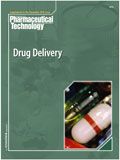
Drug Solutions Podcast: A Closer Look at mRNA in Oncology and Vaccines
April 30th 2024In this episode fo the Drug Solutions Podcast, etherna’s vice-president of Technology and Innovation, Stefaan De Koker, discusses the merits and challenges of using mRNA as the foundation for therapeutics in oncology as well as for vaccines.